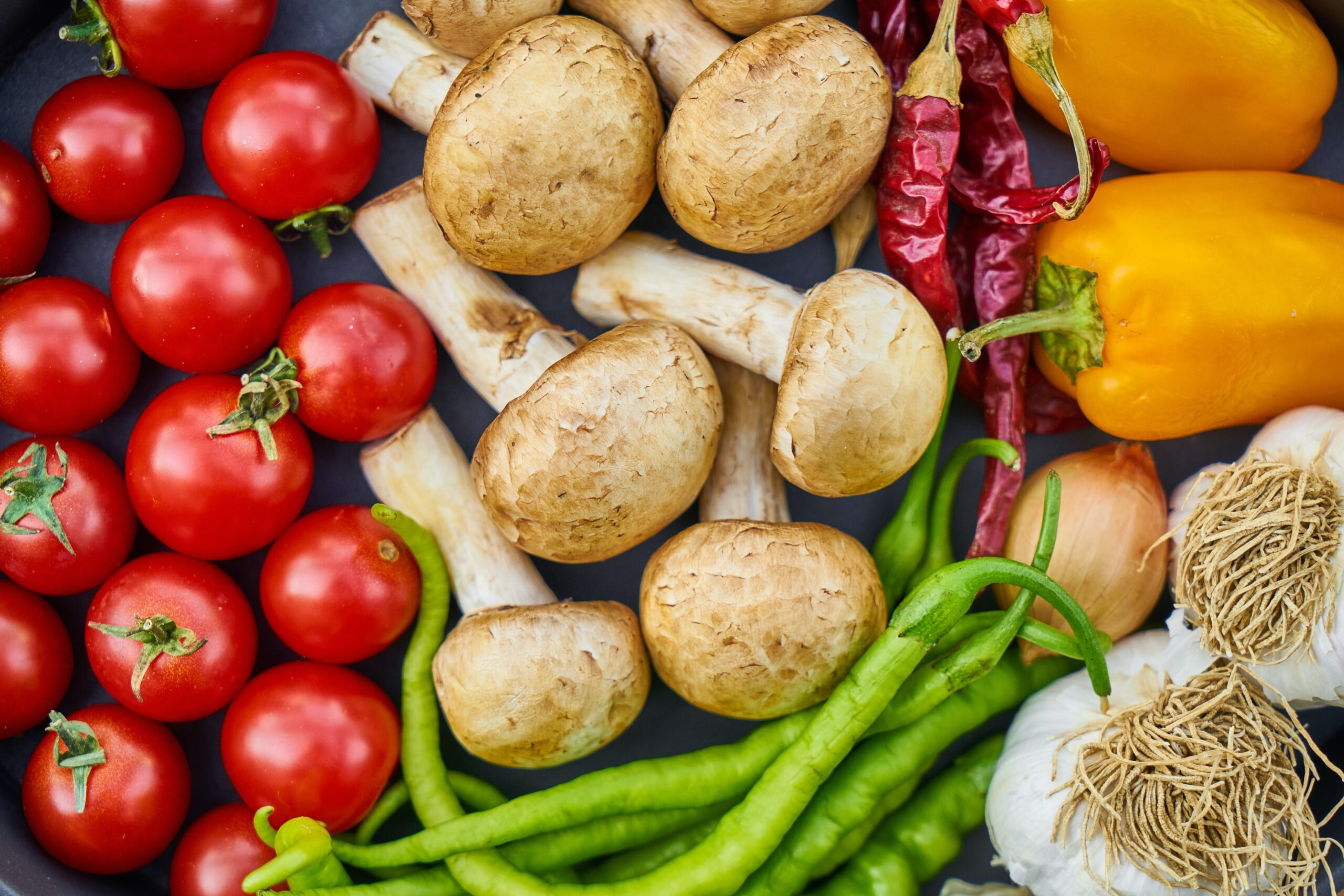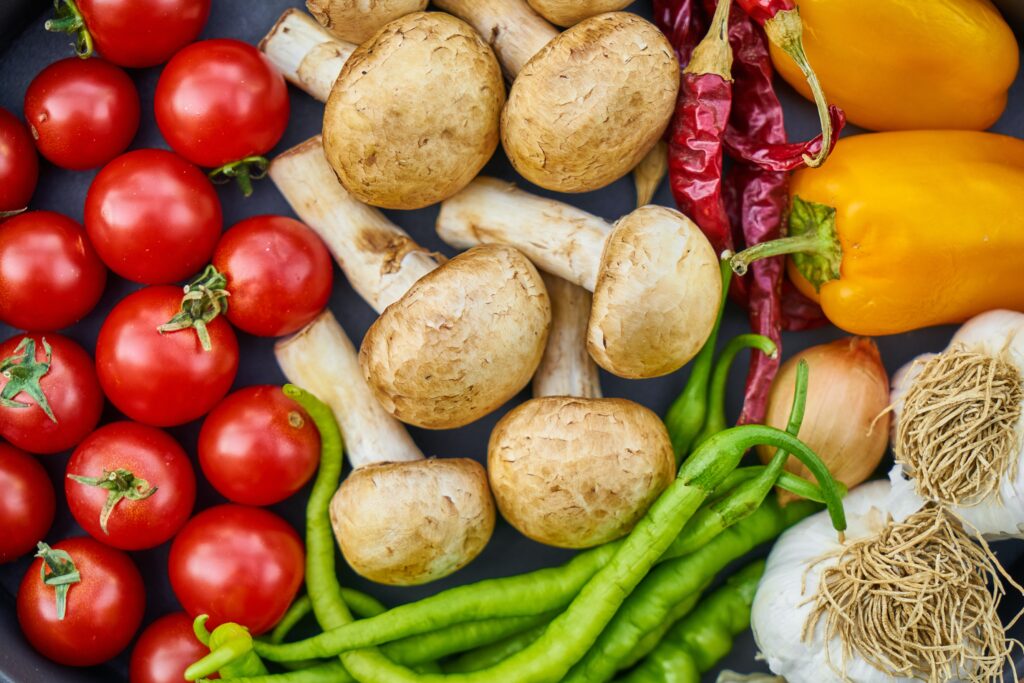Go, Grow, and Glow Foods in the Philippines (with examples)

We learned about Go, Grow, and Glow foods at a young age. It is easy to say that we know what go, grow, and glow foods are, which speaks volumes about their importance. In this article, we revisit what Go, Grow, and Glow Foods in the Philippines are while giving examples of each food type.

Importance of Go, Grow, and Glow Foods in the Philippines
Indeed, these food types are a common topic and are a mandatory part of the curriculum for even grade school students. But this only shows how important it is; that we know what foods help the body, in what ways they can help the body, and what our body needs in terms of nutrition.
As children, it is acceptable that we fail to notice the need for awareness regarding this matter. But, as adults, there is an urgent need to reassess our old views on the topic.
See also: DOH Advocates Healthy Diet as a Way of Life Even During Emergencies.
You must know Go, Grow, and Glow Foods if you want to be health
Being healthy should not be a hassle, and eating healthy foods should not be tasteless. It is common knowledge that to stay healthy, we must never eat more than what our body needs. Furthermore, by knowing what kinds of food and how much you need for consumption, we are opening ourselves to the idea that certain foods are more important for our bodies.
Knowing that, a question comes to mind, “How do I make a healthy diet enjoyable?” When you are familiar with the food types, you can choose the foods your body needs. However, you should also know when to eat and when not to overeat. At the end of the day, how many calories you consume is paramount.
This fact alone provides so much context concerning the existence of the Go, Grow, and Glow Foods curriculum. This curriculum sorts different kinds of foods into three basic food groups: go foods, grow foods, and glow foods. Each has a different benefit for the overall well-being of the body.
Go, Grow, and Glow Foods in the Philippines (includes examples)

GO Foods
GO Foods, also known as the calorie group, give us the energy to be active and outgoing. These kinds of foods fuel the body with power and supply the brain with enough nutrients to function efficiently, properly, and better.
Our bodies slowly digest the foods in this category. Therefore, they provide a stable stream of energy that can last the body several hours before diminishing. We must consume Go Foods to ensure that the body gets enough glucose for our day-to-day lives, as it is the main energy source for any human body to function.
Go Foods: Fiber
Another component of Go Foods is fiber. It is responsible for giving the stomach an easier time digesting other foods by keeping bacteria in the digestive tract healthy. That way, our bodies get the following benefits from fiber:
- Assist in the normalization of bowel movements
- aid in maintaining gut health,
- assist in lowering cholesterol levels,
- support in controlling blood sugar.
Go Foods: Carbohydrates
Go foods are mostly made up of carbohydrates, which can be found in grains and starchy fruits and vegetables. After all, the majority of the world’s staple foods are Go foods.
Some examples are Filipinos having rice as the staple of every meal, Americans eating cereal for breakfast, and pasta being the main ingredient in every Italian recipe.
When we do not eat enough Go Foods for a day, which totals about 255 to 325 grams of carbohydrates, it is to be expected that the body will not be able to keep up in terms of physical activities. The brain will also not be able to function at its best, as the communication between neurons can be disrupted in the absence of glucose. Along with these, the digestive organs of the body are also at risk from harmful substances due to the decreased intake of fiber.

Examples of Go Foods in the Philippines
To name the most common go foods in the Philippines, we have the following:
- rice (of course!)
- sweet potatoes
- bread
- oats
- crackers
- sweet corn
- sugar cane
- honey
- coconut
- avocado
- purple yam (ube)
- wheat
- nuts
- and most vegetables and fruits that contain dietary fiber.

GROW Foods
GROW foods, as the name suggests, help our bodies grow bigger and stronger. These are the body-building nutrients that our body needs. These kinds of foods are extremely essential to the body because of the way they are said to be responsible for how our bodies develop and turn out to be.
These are also foods that aid in the repair and healing of any physical wounds that our bodies may sustain.
Grow Food: Protein and Amino Acids
Protein is the most abundant nutrient in Grow foods. It serves as the main building blocks of bones, muscles, cartilage, and skin through the “building block” chemical called amino acids.
Amino acids help in the production of antibodies that protect the body from foreign and harmful materials. Moreover, our bodies use amino acids to generate hormones that support our physical and emotional growth. They also produce enzymes that assist in the formation of molecules and chemical reactions within our cells. Overall, Grow foods are very important to the structure, function, and regulation of the body.

Examples of Grow Foods in the Philippines
Grow foods include the following:
- protein-rich foods such as red meat (pork, beef, and chicken).
- seafood and fish
- eggs
- tofu
- nuts
- beans
- legumes
- and dairy products such as milk, cheese, and yogurt.
It is important to note that the sources of grow foods are extremely varied and diverse, owing primarily to our desire for protein.
Proteins are made up of more than 10 kinds of amino acids. Each of these is present in different types of food. As a result, Grow foods come from a diverse range of sources. As Filipinos, we see most grow foods in our “ulam” culture. Great examples are poultry in adobo and fish in sinigang. These kinds of body-building foods were very present in our households growing up.
The irregular intake of grow foods and proteins may result in physical weakness and fatigue. If your body does not consume Grow foods regularly, you can expect the following diverse effects:
- the loss of muscle mass and strength
- the slowing of your metabolism
- the low oxygen levels of the blood
When we do not get enough protein to feed our organs, the body will start borrowing protein from the skeletal muscle tissues. To summarize, it may result in a variety of bone and blood diseases, such as osteoporotic fractures and anemia.

GLOW Foods
The effects of Glow Food reflect in the radiance your skin, hair, and eyes emit. Most glow foods help with blood circulation and digestion and consist of different kinds of fruits and vegetables that are good for health. The vitamins, minerals, and other nutrients encased within these are a great help when it comes to making your body healthy and strong.
The glowing complexion aspect of eating these kinds of foods is just a reflection that your body is doing great in terms of keeping itself great and strong.
Glow Foods: Health Benefits
There is no single type of Glow food. In the sense that these foods do not serve a specific purpose, this group is arguably even more diverse than Grow foods.
Some are useful for maintaining the health of the digestive tract, while others are fantastic energy sources. Despite that, glow foods mainly boost the immune system.

Examples of Glow Foods in the Philippines
Some of the best examples of glow foods are red fruits like tomatoes, which contain lycopene, bananas, oranges, apples, and green leafy vegetables. As a general rule of thumb, all kinds of fruits and vegetables can be found in the section on “glow foods.”
When talking about Filipino glow foods, we have the uniquely Filipino calamansi to provide us with vitamin C! It is worth noting that calamansi can be considered a wonder fruit, as it is really beneficial for the body’s immune system and can be used to battle different kinds of illnesses, COVID-19 being one of them.
Examples of glow foods mainly include vegetables and fruits. Dairy products, such as milk, are also included. Several other nuts are also included, like cashews. Whole grains count as glow foods too!
As it is the immune system that Glow foods support, to not eat enough of them is to risk different kinds of diseases and sickness, especially when it comes to digestive problems such as constipation, hemorrhoids, and diarrhea. We are also open to other diseases such as heart disease, diabetes, Alzheimer’s disease, cancer, and more. Generally, without glow foods, we are more susceptible to getting sick.
Why you need to know Go, Grow, and Glow Foods as an adult
Go, Grow, and Glow Foods affect our food intake as a whole. It can and will contribute to fighting diseases and improving our body’s whole circulation. Despite the tons of superstitions, we have about some foods, it is still a fact that these food types are tested and proven.
There is still information that is yet to be uncovered about the three food groups. However, as it stands now, it is enough to conclude that the hierarchy between foods is truthful and effective when balanced: Go on the bottom of the pyramid, Grow in the middle, and Glow on the Top.
Final Thoughts
The Three Gs (go, grow, and glow) have an impact on a person’s diet. The body should have a balanced diet for a better and healthier body. Most medical professionals recommend making a food scale to measure your intake. Examine your daily diet and make notes that will help you get the balanced diet your body requires.
Nevertheless, a healthy body does not rely on food alone. Proper exercise and sleep schedules also affect your body. So, make sure to take care of yourself properly, especially your meals!
So, how about now? Can you now answer, “How do I make a healthy diet enjoyable?”
Read more:






